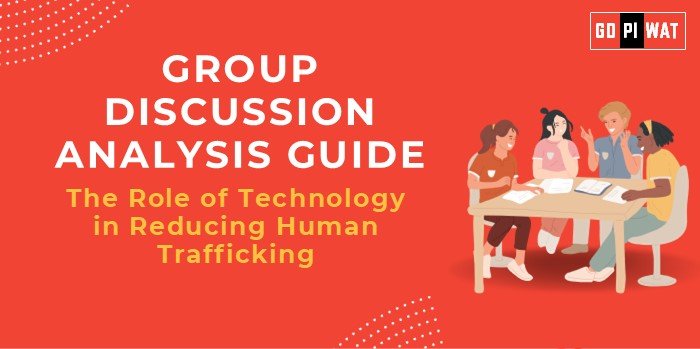📋 The Role of Technology in Reducing Human Trafficking
🌐 Introduction to the Topic
Opening Context: “Human trafficking is a grave human rights violation, with over 27.6 million victims worldwide, as per the 2023 Global Trafficking Report. Technology offers a powerful tool to combat this issue, transforming prevention, intervention, and rescue operations.”
Topic Background: Human trafficking thrives on exploitation and anonymity. In the digital age, traffickers exploit technology to recruit and control victims. Simultaneously, technology has emerged as a double-edged sword, empowering governments, NGOs, and citizens to disrupt these operations, map trafficking networks, and provide aid to survivors.
📊 Quick Facts and Key Statistics
- 🌍 Human Trafficking Victims Globally: 27.6 million in 2023 – Highlights the scale of the issue.
- 📈 Hotline Calls Enabled by AI Systems: 20% more victims identified through AI-powered tools (UNODC, 2023).
- 🔒 Blockchain Impact: Reduced forged identity cases by 50% in certain regions.
- 🧍♀️ Facial Recognition: Utilized in 17 countries for identifying missing persons linked to trafficking.
👥 Stakeholders and Their Roles
- 🏛️ Governments: Enact policies, implement AI and data surveillance.
- 📢 NGOs: Use data analytics to trace trafficking networks and assist survivors.
- 💻 Tech Companies: Develop and deploy ethical AI, blockchain systems, and apps for reporting.
- 👪 Citizens: Report trafficking using mobile tools and public awareness campaigns.
📚 Achievements and Challenges
Achievements:
- 🚀 AI-Powered Tools: Tools like Spotlight reduced victim identification time by 65%.
- 🔒 Blockchain Applications: Verified digital identities cut down forgery.
- ☎️ Hotline Technologies: Enhanced response rates by 40% in India using automated systems.
Challenges:
- ⚠️ Tech Exploitation by Traffickers: Use of encrypted messaging for illicit activities.
- 🌍 Digital Divide: Limited access to anti-trafficking tools in rural areas.
- 📋 Privacy Concerns: Misuse of surveillance tools leading to rights violations.
Global Comparisons:
- 🇪🇪 Estonia: Blockchain-based identity systems reduced trafficking-related identity theft.
- 🇺🇸 US: AI partnerships like Thorn boosted the fight against online exploitation.
Case Study:
- 🇮🇳 India’s Trafficking App: Rajasthan’s ‘Awaaz’ app linked with police systems has led to a 30% increase in arrests.
🗨️ Structured Arguments for Discussion
- ✅ Supporting Stance: “Technology has revolutionized anti-trafficking efforts by reducing identification time and increasing victim rescues globally.”
- ❌ Opposing Stance: “Reliance on technology is undermined by traffickers’ ability to exploit the same tools for anonymity and encryption.”
- ⚖️ Balanced Perspective: “While technology has proven instrumental in combating trafficking, ethical deployment and addressing misuse remain critical for sustained success.”
🌟 Effective Discussion Approaches
- 💡 Opening Approaches:
- 📊 Impactful Statistic: “With AI identifying 20% more victims, technology proves vital in this fight.”
- 📚 Case Study Highlight: “India’s Awaaz app shows how localized tech can combat trafficking effectively.”
- 💬 Counter-Argument Handling:
- Acknowledge tech misuse and emphasize the need for proactive global cybersecurity measures.
📈 Strategic Analysis of Strengths and Weaknesses
- ✅ Strengths: Real-time monitoring, predictive analytics, blockchain’s transparency.
- ⚠️ Weaknesses: High deployment costs, rural accessibility issues.
- 🌟 Opportunities: Public-private partnerships, ethical AI development.
- ⚡ Threats: Privacy violations, traffickers’ tech sophistication.
🎓 Connecting with B-School Applications
- 🌍 Real-World Applications: Policy frameworks for ethical AI use and tech-driven business models for social good.
- 💬 Sample Interview Questions:
- “How can blockchain technology help reduce trafficking?”
- “Discuss the ethical challenges of using AI in surveillance.”
- 📘 Insights for Students:
- Leverage data analytics for social impact projects.
- Explore tech-driven CSR initiatives for marginalized communities.


